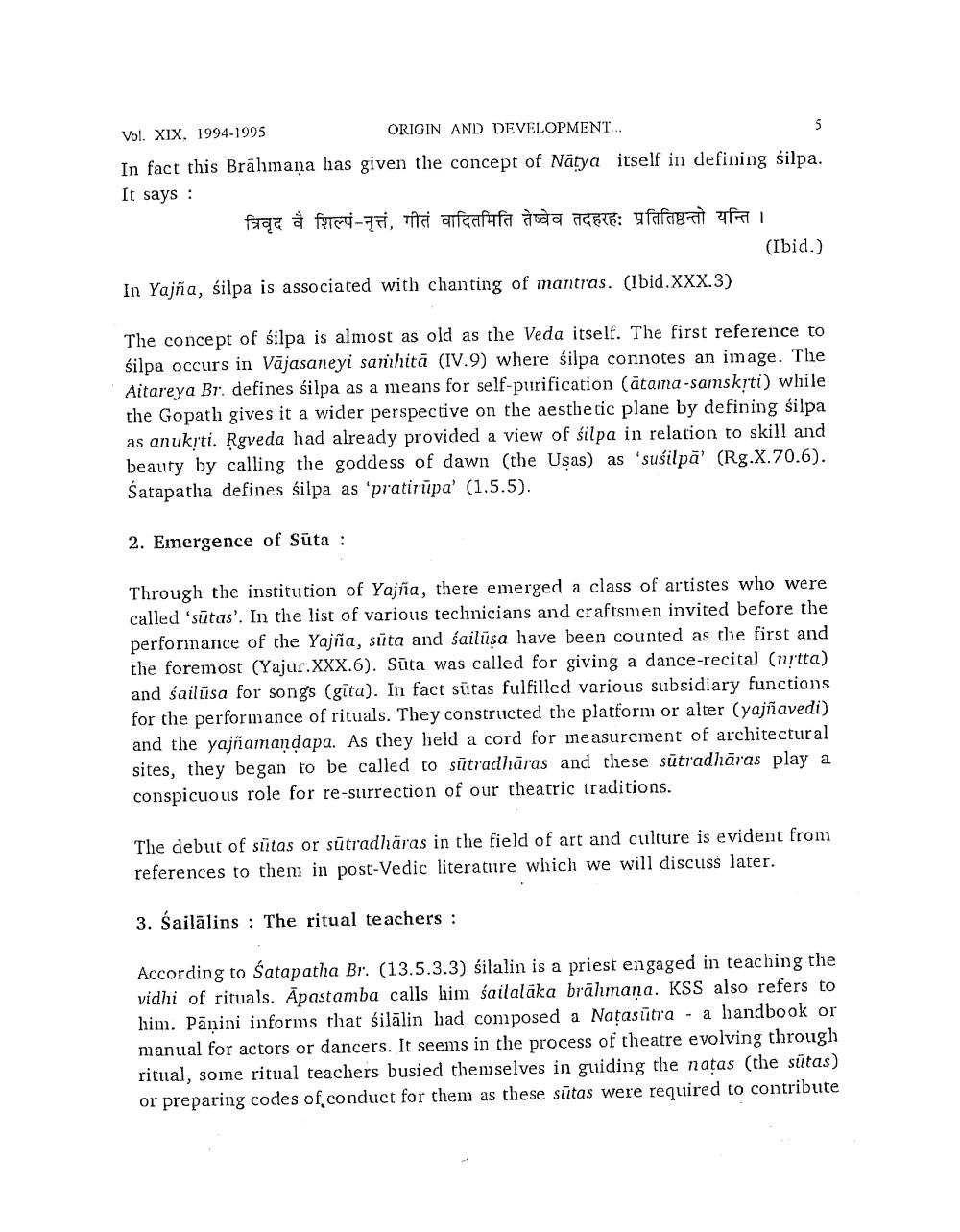Book Title: Sambodhi 1994 Vol 19 Author(s): Jitendra B Shah, N M Kansara Publisher: L D Indology Ahmedabad View full book textPage 9
________________ Vol. XIX. 1994-1995 ORIGIN AND DEVELOPMENT... In fact this Brāhmaṇa has given the concept of Nätya itself in defining silpa. It says: त्रिवृद वै शिल्पं-नृत्तं, गीतं वादितमिति तेष्वेव तदहरहः प्रतितिष्ठन्तो यन्ति । (Ibid.) In Yajña, silpa is associated with chanting of mantras. (Ibid.XXX.3) The concept of silpa is almost as old as the Veda itself. The first reference to silpa occurs in Vājasaneyi sanhitā (IV.9) where silpa connotes an image. The Aitareya Br. defines silpa as a means for self-purification (atama-samskrti) while the Gopath gives it a wider perspective on the aesthetic plane by defining silpa as an ukrti. Rgveda had already provided a view of silpa in relation to skill and beauty by calling the goddess of dawn (the Usas) as 'susilpā' (Rg.X.70.6). Satapatha defines silpa as 'pratirūpa' (1.5.5). 2. Emergence of Sūta : Through the institution of Yajña, there emerged a class of artistes who were called 'sūtas'. In the list of various technicians and craftsmen invited before the performance of the Yajña, sūta and sailūsa have been counted as the first and the foremost (Yajur.XXX.6). Sūta was called for giving a dance-recital (nrtta) and sailīsa for songs (gīta). In fact sūtas fulfilled various subsidiary functions for the performance of rituals. They constructed the platform or alter (yajñavedi) and the yajñamandapa. As they held a cord for measurement of architectural sites, they began to be called to sūtradhāras and these sutradhāras play a conspicuous role for re-surrection of our theatric traditions. The debut of stītas or sūtradhāras in the field of art and culture is evident from references to them in post-Vedic literature which we will discuss later. 3. Sailālins : The ritual teachers : According to Satapatha Br. (13.5.3.3) silalin is a priest engaged in teaching the vidhi of rituals. Apastamba calls him śailalāka brāhmaṇa. KSS also refers to him. Pāņini informs that silālin had composed a Națasutra - a handbook or manual for actors or dancers. It seems in the process of theatre evolving through ritual, some ritual teachers busied themselves in guiding the natas (the sütas) or preparing codes of conduct for them as these sūtas were required to contributePage Navigation
1 ... 7 8 9 10 11 12 13 14 15 16 17 18 19 20 21 22 23 24 25 26 27 28 29 30 31 32 33 34 35 36 37 38 39 40 41 42 43 44 45 46 47 48 49 50 51 52 53 54 55 56 57 58 59 60 61 62 63 64 65 66 67 68 69 70 71 72 73 74 75 76 77 78 79 80 81 82 83 84 85 86 87 88 89 90 91 92 ... 182
